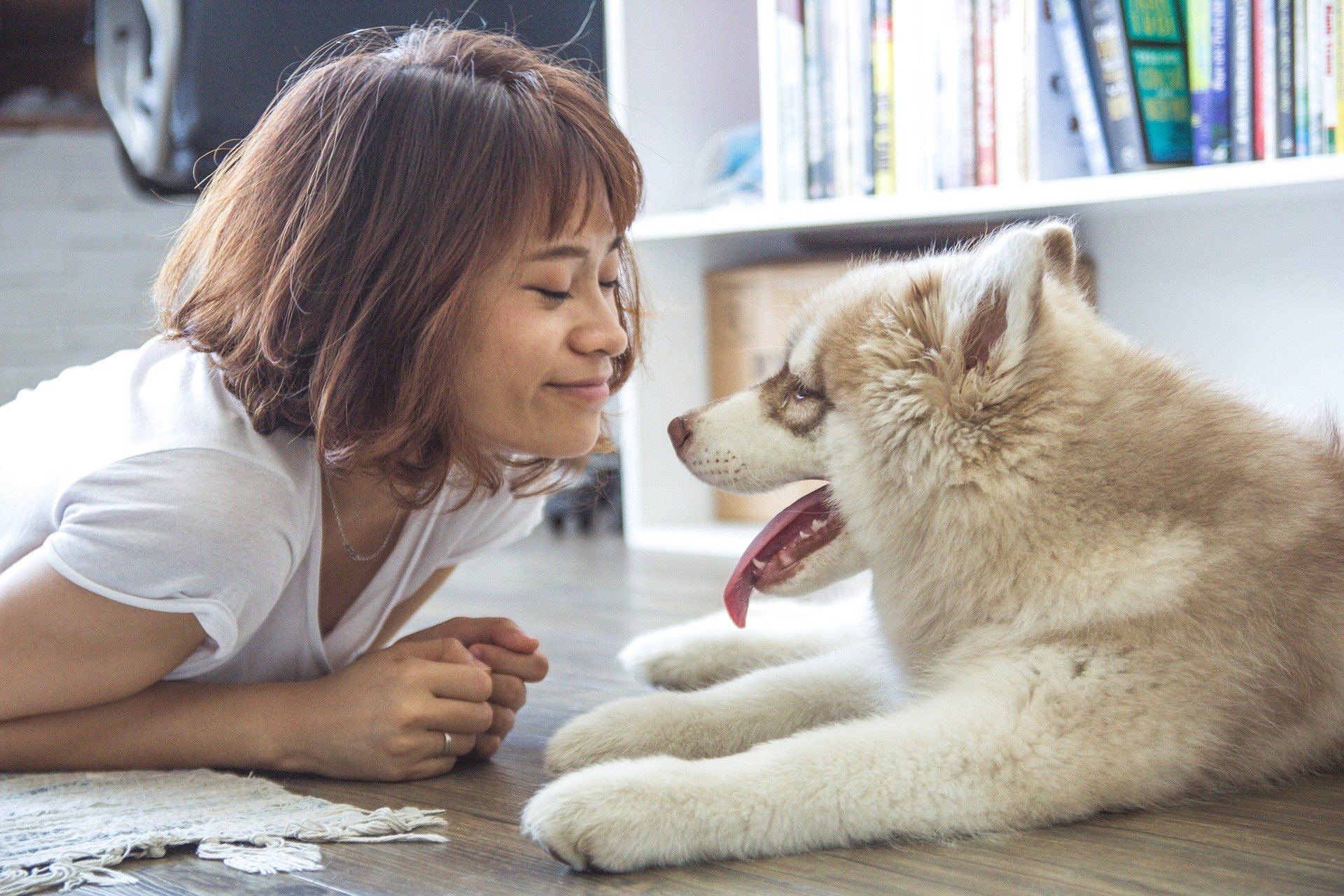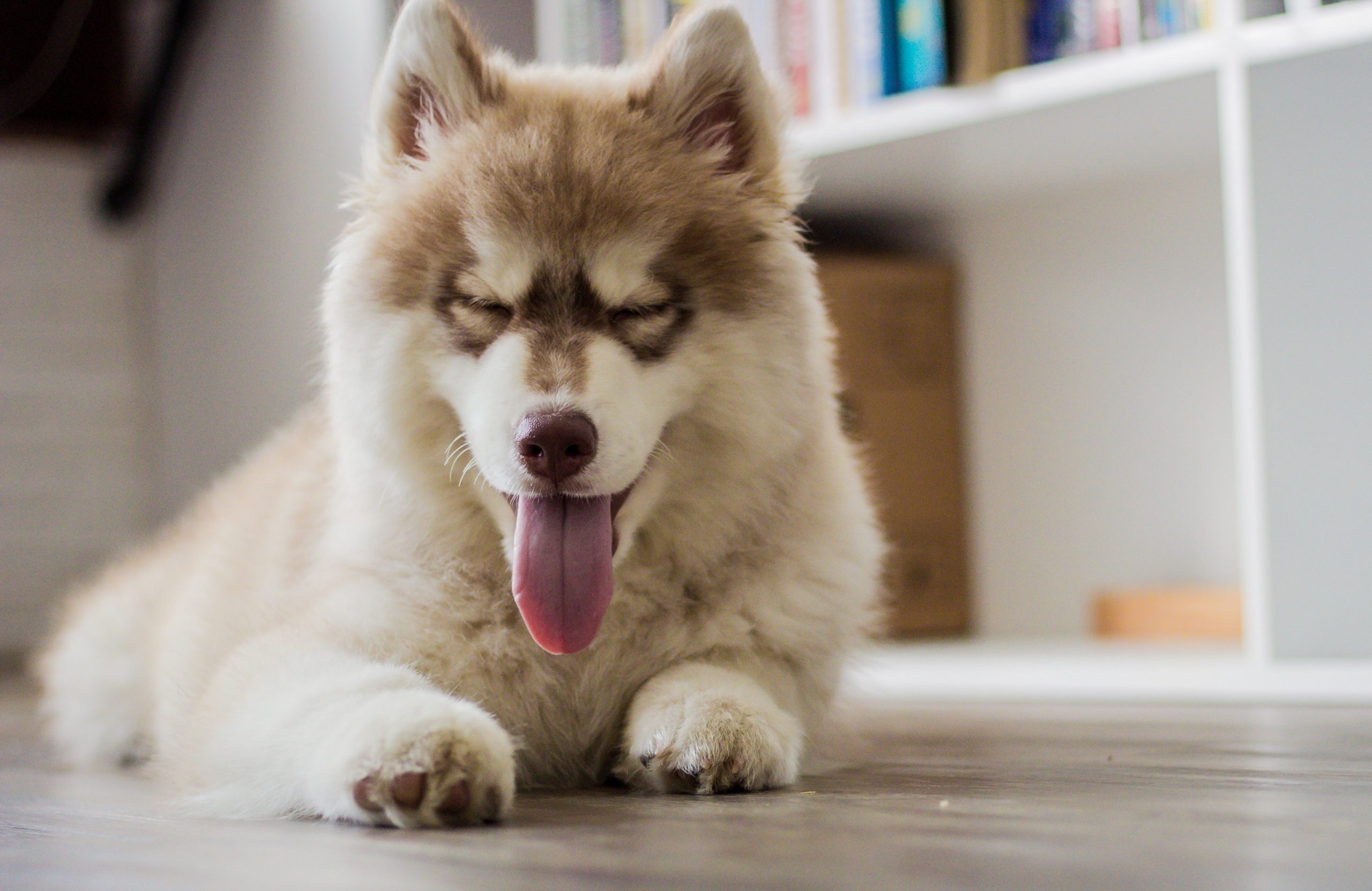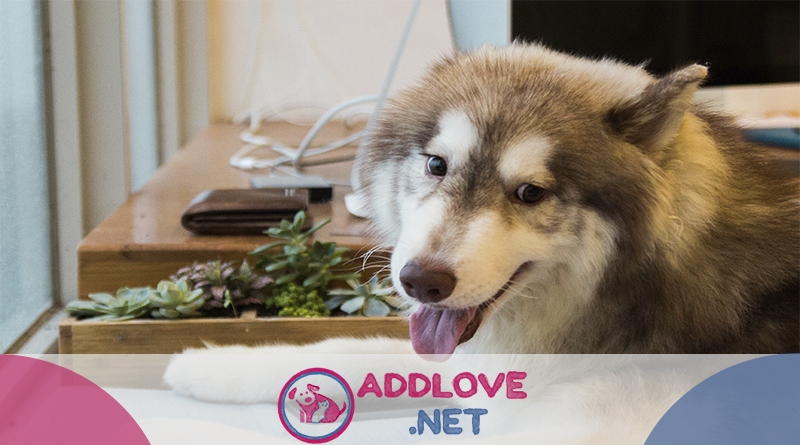Huskies are hardy dogs with good health. If the pet is properly looked after, it can live up to 20-25 years. However, many owners do not follow the rules of care, because of which the husky begins to feel sad, he has health problems. For example, some breeders forget that this breed was bred for sledding. Therefore, regular physical activity is an essential part of the husky’s life. Being locked up all day, the dog feels unhappy. We will talk about other rules for caring for a husky later.
How to care for your husky: nutrition
Let’s start with how often you need to feed individuals of different ages.
- Up to 2 months – six times a day.
- 2 to 4 months – five times a day.
- 4 to 6 months – four times a day.
- 6 to 10 months – three times a day.
- From 10 months to 1.5 years – 2 times a day.
- Adult dog – 1-2 times a day.
10 ANIMALS YOU DIDN’T KNOW ABOUT
Copy video link
Play / Stop
Mute / Unmute sound
Report a problem
Language
Mox player
ADVERTISEMENT
You have a choice: feed your dog regular, “human” food or buy ready-made food.
If you plan on giving your husky a regular meal, remember that meat should make up 50-60% of the diet. The most preferred option is beef. Rabbit and turkey work well. Be careful with chicken. In many individuals, it causes allergies. If you do decide to give your dog chicken, carefully monitor its health. If you find the slightest problems with skin, hair, eyes, general well-being, review the diet. It is forbidden to feed huskies with lamb and pork. Give the meat slightly cooked or raw.
You can give your dog egg yolks 1-2 times a week. They can be cooked or raw. You can add fermented milk products to the diet. It is better to feed your husky with cottage cheese or kefir than raw milk – your pet may get an upset stomach from it. It is allowed to feed the dog with vegetables. The exception is potatoes. A good option is porridge: for example, rice, oatmeal, buckwheat. Add a little vegetable (olive, sunflower, pumpkin, sesame, hemp) oil or fish oil to your food. It is strictly forbidden to give your dog peanut butter, cocoa butter, coconut, cottonseed and palm oil. Butter should also not be added to the diet as it damages the animal’s liver.
Don’t forget about vitamins. They support the husky’s immune system, improve the condition of the skin, coat, eyes. Ask your veterinarian about which vitamins to give your dog and how much.
If you decide to feed your pet with commercial food, do not save too much. Cheap feed contains raw starch. This component is difficult for the husky’s body.

Puppies under 10 months old should be given special puppy food. Important! Switch to the “adult” version no later than ten months. Otherwise, the husky may develop hip dysplasia. Choosing the right food for this breed is a difficult task. The dog may have individual characteristics that do not allow the use of a particular food. Monitor your pet’s health after eating food.
As for adults, it is better to give preference to food for active dogs. Recall: Husky is a breed that has a craving for physical activity. For the body to allow the dog to run and play to its fullest, you need to saturate it with proteins and healthy fats. Specialized feeds have it all. You can give your husky both dry and wet food.
If you have any questions about the nutrition of your animal, contact your veterinarian. The specialist will select the right food and vitamins. Thus, you will not need to experiment with the health of your pet.
Husky care in the heat
Although this breed was bred in the northern cold regions, the dog can tolerate hot summers without harm to itself. The Husky has a thick undercoat that absorbs temperature from direct sunlight. As a result, the dog’s body temperature does not change too much.
However, there is a second side to the coin. With serious physical exertion, heat comes from the dog’s body. It is difficult to skip by the same undercoat (including, therefore, huskies do not freeze during severe frosts). As a result, the sun gives its dose of heat, and the body – its own. This greenhouse effect creates discomfort for the husky and is dangerous. Therefore, during the heat, you should not overload your pet. Also, make sure your dog has access to water at all times.
Husky hair care
The coat of dogs of this breed is self-cleaning, as a result of which the dog needs to be bathed very rarely. Thanks to its self-cleaning ability, wool does not emit an unpleasant odor. In short, grooming a pet’s coat consists almost entirely of combing it out. To effectively carry out this procedure, you need to acquire the following devices:
- slicker;
- brush with medium teeth;
- crest.
Between molts, the dog should be brushed at least once a week. As a result, the coat will be shiny, smooth and will not have ugly lumps. During the moulting period (autumn-spring), the dog must be combed out at least once a day. If you live in an apartment – twice a day. First, the crawled undercoat is removed. For this, a slicker is used. Next, there is brushing and combing. Particularly carefully comb out the hair between the ears, on the back of the legs, on the front legs and tail. No need to make sudden movements. Scratch behind and against the coat.
Puppies under 6 months old need to be brushed differently as their coat is still too soft and vulnerable. Use a special soft brush available from pet stores.
As mentioned above, you rarely need to bathe your husky – 2-3 times a year. If the dog’s coat is clean, water treatments can be performed even less frequently. The fact is that too frequent bathing disrupts the fat balance of the animal’s skin. The result is discomfort and unpleasant odor.

It is forbidden to use human bathing equipment. Use only dog shampoos and conditioners. If your husky is still afraid of a hair dryer, dry it off with a regular towel. In the future, you can dry the wool with a hair dryer at a low temperature. After bathing, it is better to comb the dog so that the coat retains its beautiful appearance.
Washing your paws is not considered full bathing. This procedure can be carried out after every walk. It is worth starting from an early age, as an untrained dog may resist in the future.
Husky paw care
Huskies are active animals that can pick up a lot on their paws in one walk. We strongly recommend that you wash them after every street visit. If you live in a private house and your dog is out in the yard, wash their paws as they get dirty.
If your dog’s paws are not too dirty (which happens after short walks), plain cool water is recommended. It is worth using soap in “severe” cases. Excellent for washing paws diluted in water dog shampoo in a ratio of 1 to 5. It is worth cleaning not only the pads, but also the space between them. After bathing, wipe the paws with a regular towel.
In the context of taking care of the paws, caring for a husky in an apartment is more difficult than in a country house. The fact is that a large number of substances that harm the pads accumulate on city roads. This is salt, and settled exhaust, and dirt with impurities, which is carried by thousands of people. To protect your dog’s paws, a wax ointment or paste can be applied to the skin. These can be purchased at pet stores. The product must be applied before walking. It creates a film that protects the paws from irritation and the negative effects of temperatures. In addition, many ointments and pastes have a healing effect. After a walk, the product must be washed off.
Dog boots can also be used to protect the paws. They protect not only from the above factors, but also from mechanical damage.
It is recommended to apply softening dog cosmetics to the skin of the paws every 3-4 days. It will protect against discomfort and irritation. You cannot use human means. Firstly, they are not suitable in composition. Secondly, the dog will certainly lick off the harmful “chemistry” that will attract her with its scent. If you cannot get specialized products, you can use a small amount of vegetable oil. Of the more difficult to access – goose lard.

During its races and games, your pet can injure its paw. Treat the resulting crack with a dog emollient antiseptic until it heals completely. It is worth applying the product daily 2-3 times. If the crack does not heal for more than a week, take your husky to the vet. The same must be done when stains appear.
In the case of a shallow cut, the wound should be rinsed and treated with hydrogen peroxide. Over the next four to five days, it is necessary to treat the wound with an antiseptic: for example, a solution of furasol. If the injury is serious, of course, it is better to go to the veterinarian after stopping the bleeding. If this is not possible, do the following: remove foreign objects from the wound, if any, treat with hydrogen peroxide, apply a liquid plaster. In the future, use an antiseptic. The dog may chew on the wound. In this case, you need to bandage it. Dog boots can be used to protect the wound while walking.
If your dog is licking a wound, do not stop him from doing it. Saliva contains a powerful antiseptic that promotes faster healing. The exception is when you have just applied medicine to the wound.
Trim your nails regularly. This is especially true for huskies who spend little time on the street, and their claws do not grind on the asphalt. As soon as they start to “curl”, trim. To do this, you should purchase a dog clipper. Do not skimp on this device: the better it is, the less discomfort your pet will get from the trimming procedure. Remember one more rule: often better, but safer. Cut just a few millimeters, otherwise there is a risk of touching the vessel.
Husky ear care
An ear examination is recommended every day. However, you shouldn’t clean them every day. There should be a little dark brown sulfur inside. It protects your ears from dirt. Consequently, if you frequently remove sulfur, deprive your husky of its natural shield.
It is worth cleaning your ears once every 2-3 weeks. If there is too much sulfur, once a week. You can use either a dry cotton swab or a swab with a little baby oil. A corner of a terry napkin is perfect. Puppies can resist, so it’s best to use a cotton swab. Otherwise, the tampon may slip out of your hands and remain in the auricle, which can lead to a difficult extraction process.
Don’t overdo it with prevention. Hydrogen peroxide is used only for diseases. The product can irritate healthy skin. The same applies to antiseptic and anti-inflammatory drugs. It is worth using ear mites for preventive purposes only after the husky has been treated for fleas.
When to see your veterinarian:
- the ear “squishes”;
- the skin inside turned red;
- the pet constantly scratches his ear, this prevents him from sleeping;
- unpleasant smell from the shells;
- swelling, induration;
- discharge (but not sulfur);
- the dog flinches at the moment of touching the ear;
- an ear mite is seen inside.
If your dog loves to swim in ponds, treat his ears with special powder before each “water session”. Then remove the product with a dry cloth. Read more about the use of powder in the instructions.
Care for a pregnant husky
Husky pregnancy usually lasts 60-63 days. Due to individual characteristics, the period can be reduced to 58 days or extended to 72 days. It is worth preparing for childbirth from day 50. You need to get medicines for obstetrics, organize an aviary, and also minimize the amount of protein in the husky’s diet. The fact that the dog will give birth in the next day is evidenced by a drop in body temperature by one degree.
During pregnancy, the following rules must be observed:
- in the first 3 weeks after mating, significantly reduce physical activity. Most often, after this period, the husky itself continues to observe the “economy mode”, although it all depends on the nature of the expectant mother;
- take your dog to fresh air several times a day;
- increase the amount of vitamins. Veterinarian consultation is required;
- minimize the number of jumps;
- treat your dog carefully: no jolts, blows, falls and other rough physical impact.
When to see your veterinarian:
- increased body temperature;
- toxicosis after 35 days of pregnancy;
- yellow, green, red discharge from the loop;
- aggressive behavior of the husky;
- anxiety.
If you care for a pregnant husky correctly, and there are no complications, the birth will take place quickly and with minimal human intervention.
Husky care after childbirth
Dark red discharge from the loop for two to three weeks after birth is normal. If the shade is different, or an unpleasant odor appears, you need to see a doctor as soon as possible. These are signs of inflammation of the uterus.
While the husky is feeding the puppies, you should not use dog cosmetics and chemical protective agents. They can poison the puppies. A full bath for a newly-made mother can be carried out five to seven weeks after giving birth.
Examine the nipples of a nursing husky. If they have damage, trim the claws on the front legs of the babies.
In the case of a small number of offspring, the mother’s mammary glands may thicken. In this case, first, you need to massage these glands. Second, direct the puppies to the nipples near which there is a seal.
For the first three days, the mother’s diet should consist only of dairy products. In the period from 3 to 5 days, you can give boiled meat and broth. After the fifth day, it is allowed to feed the husky with raw meat. One week after giving birth, you can feed the dog with puppy food and its usual diet. As a supplement, mineral supplements are used that are beneficial for the skeleton of puppies. If babies develop diarrhea after a certain food, remove it from the diet. You need to monitor not only the mother, but also the offspring.
Conclusion
As you can see, there are a lot of rules and recommendations. However, if you follow them, your husky will be happy, cheerful and grateful to you. In addition to the above, this dog should be allowed to “let off steam” on a regular basis. A powerful energy circulates inside the husky, which, according to the breeders’ idea, should have been spent on transporting sleds. Let your pet use this energy for running and playing.
We wish your pet health!


